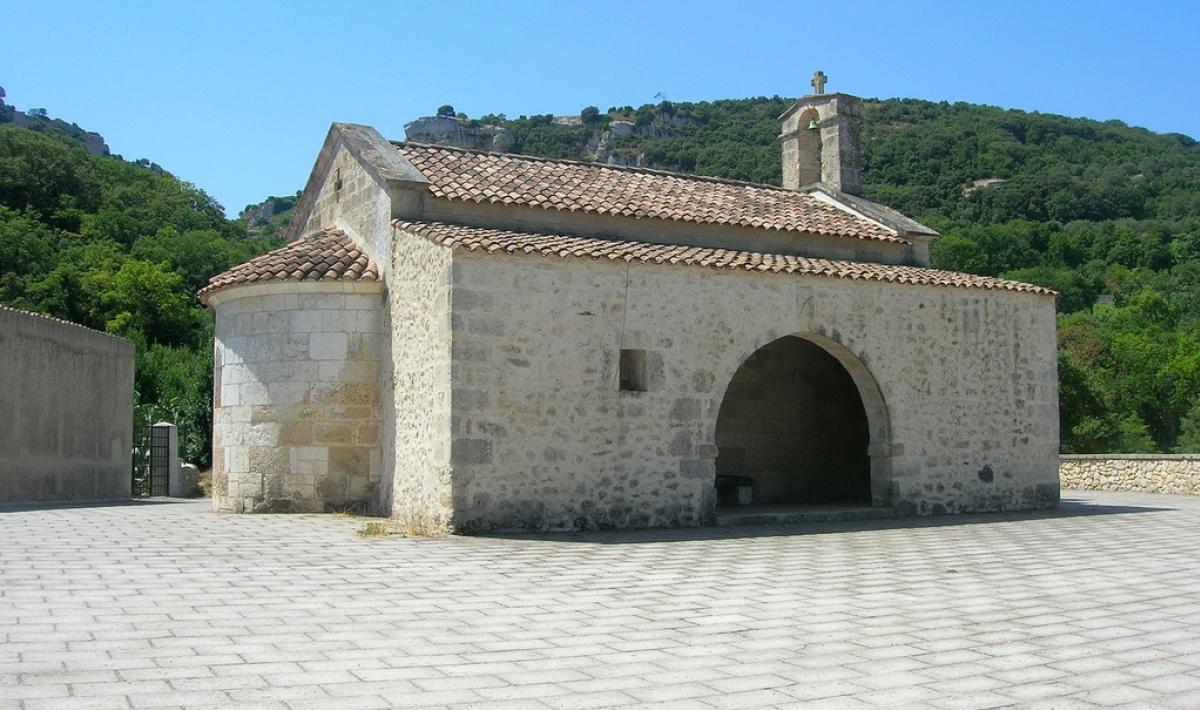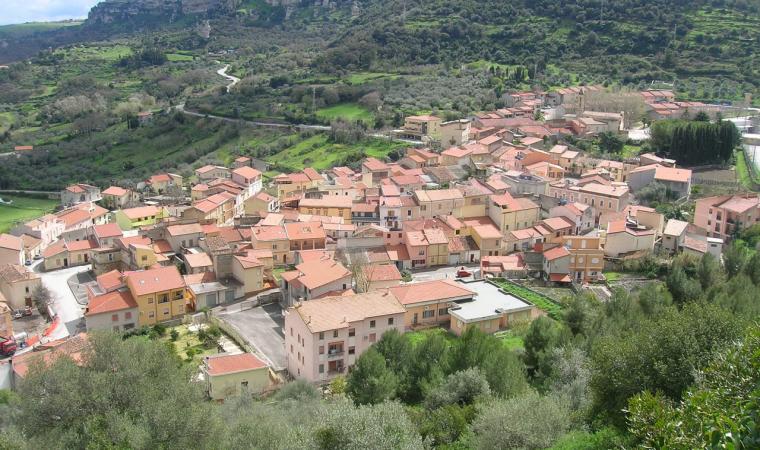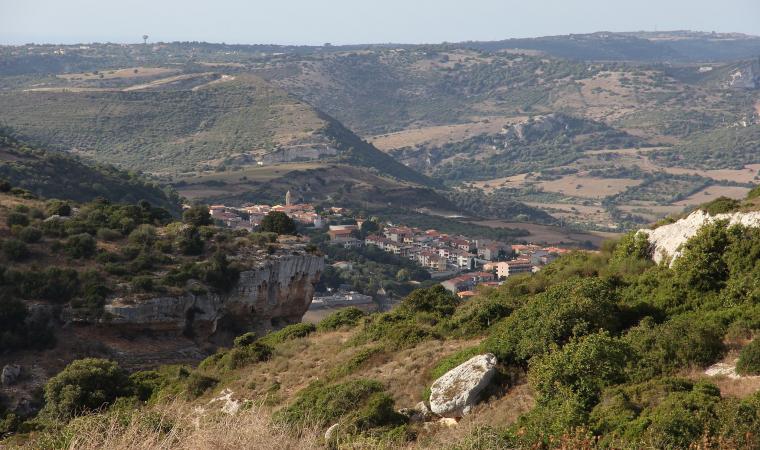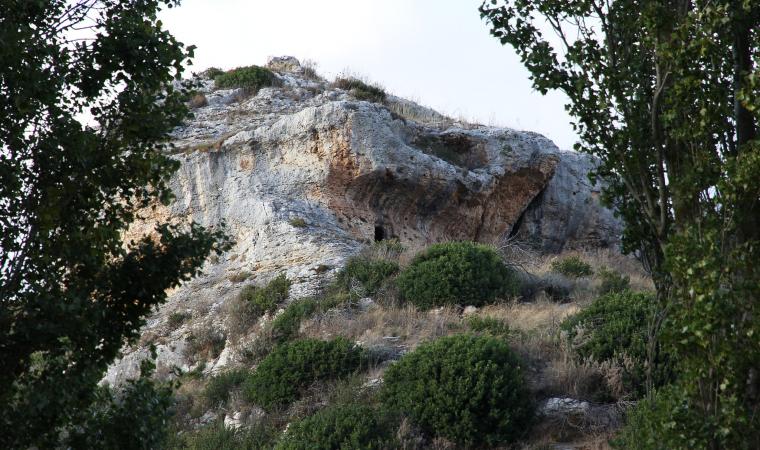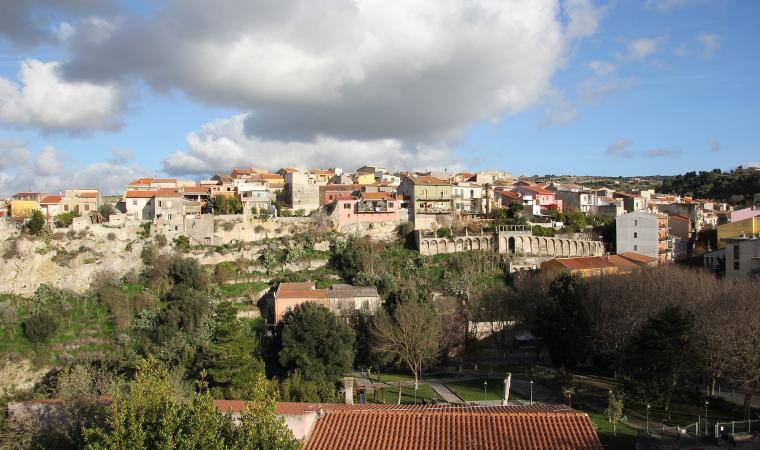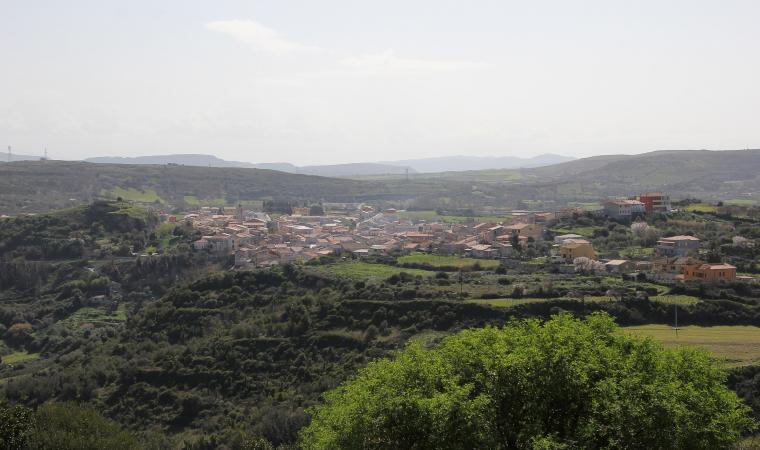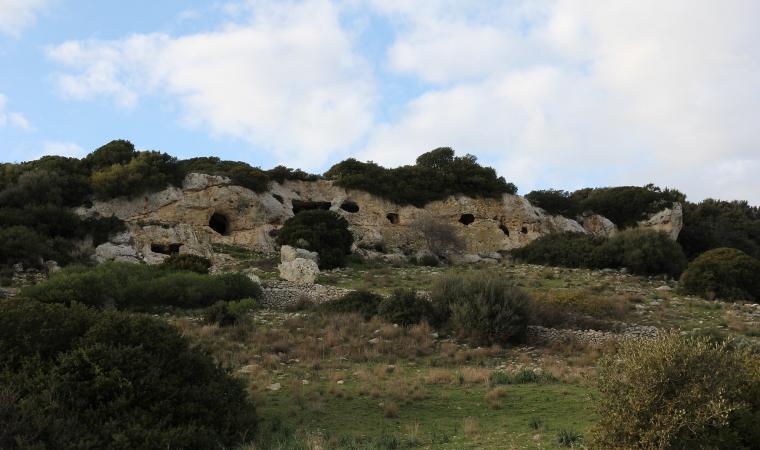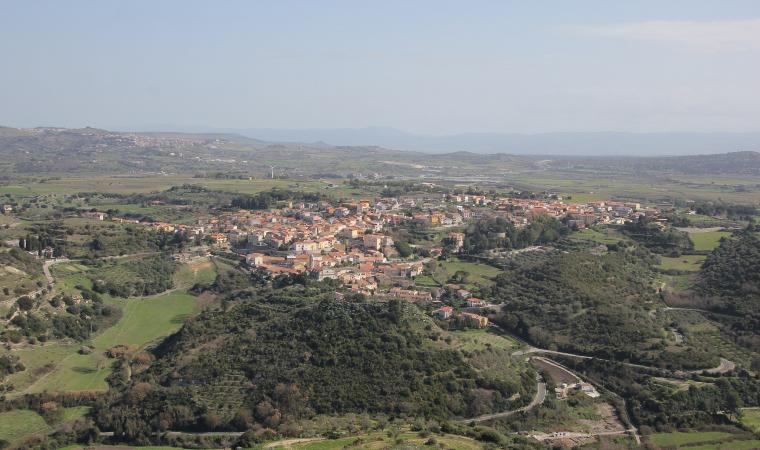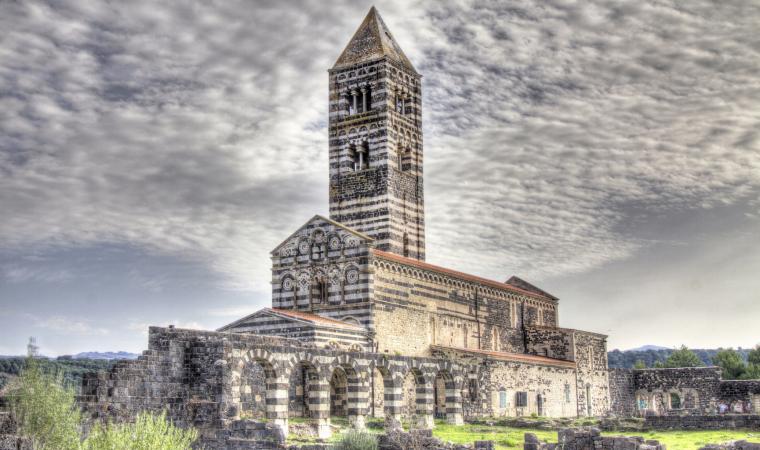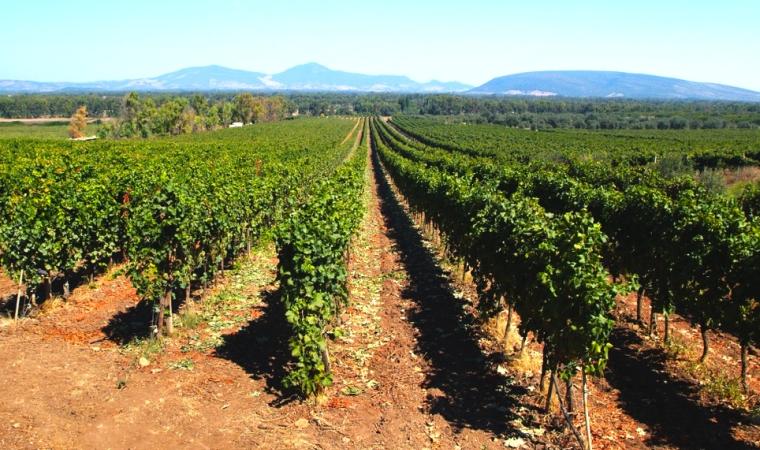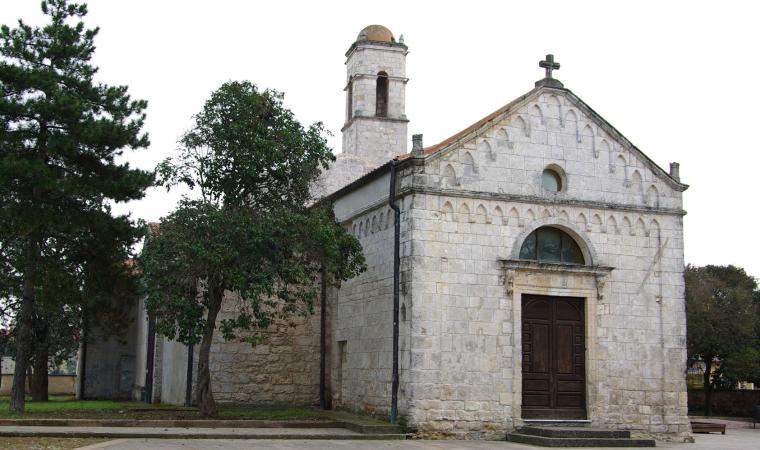It is one of the smallest Romanesque churches in Sardinia and has been resting for nine centuries in the open countryside, surrounded by cultivated fields, olive groves and orchards, less than a kilometre from the town of Cargeghe. It is documented, from 1125, as one of the properties of the monastery of San Salvatore di Camaldoli, under the direct control of the Basilica of the Santissima Trinità di Saccargia, but the Church of Santa Maria di Contra was probably built by workers active in the nearby curatorie (administrative divisions) of Ploaghe and Goceano. The building material used was limestone, worked in medium-sized regular-shaped slabs.
The façade, above which there is a bell gable, features a portal with monolithic jambs and a raised relieving arch. You will also notice a cross-shaped window – repeated on the back, above the apse - and two corbels, which probably served as support for a portico or a roof, which is no longer there. Other windows, with ogival and double conch centring, appear in the apse and on the sides. Another room similar to a loggia was built on the north side at a later date and was used to welcome pilgrims. Inside, the church hall has a single nave, which is simple and austere, and contains an antependium dating back to the 17th century. As per tradition, the apse is facing east, towards the rising sun. Santa Maria di Contra is also known for a peculiarity: it was one of the locations used during the filming of ‘Padre Padrone’, a film released in 1977 and based on the novel of the same name by Gavino Ledda.
The surrounding area is full of architectural and archaeological treasures. On the subject of medieval churches, eight kilometres from Contra, you can admire one of the absolute masterpieces of Sardinian Romanesque style: the Basilica of the Santissima Trinità di Saccargia, in the territory of Codrongianos. You can see the very tall bell tower from afar, but when in its presence you will be struck by the solemnity of the building and the charm of the two-coloured lines. Between Cargeghe and Florinas, at the foot of the Giorré plateau, lies the necropolis of s’Elighe Entosu, consisting of five Domus de Janas dug into isolated blocks of limestone rock. Two of them, Tombs 1 and 4, are distinguished by raised architectural elements and symbols, particularly spiral motifs, doors with bas-relief ledges above them, pilasters, false doors and grooves on the ceiling, imitating a double-pitched roof. Particularly captivating, on the eastern outskirts of Cargeghe, is a piece of evidence dating back to the 2nd century BC: the Roman road of sos Bajolos that you can also travel along at night, thanks to a lighting system.

